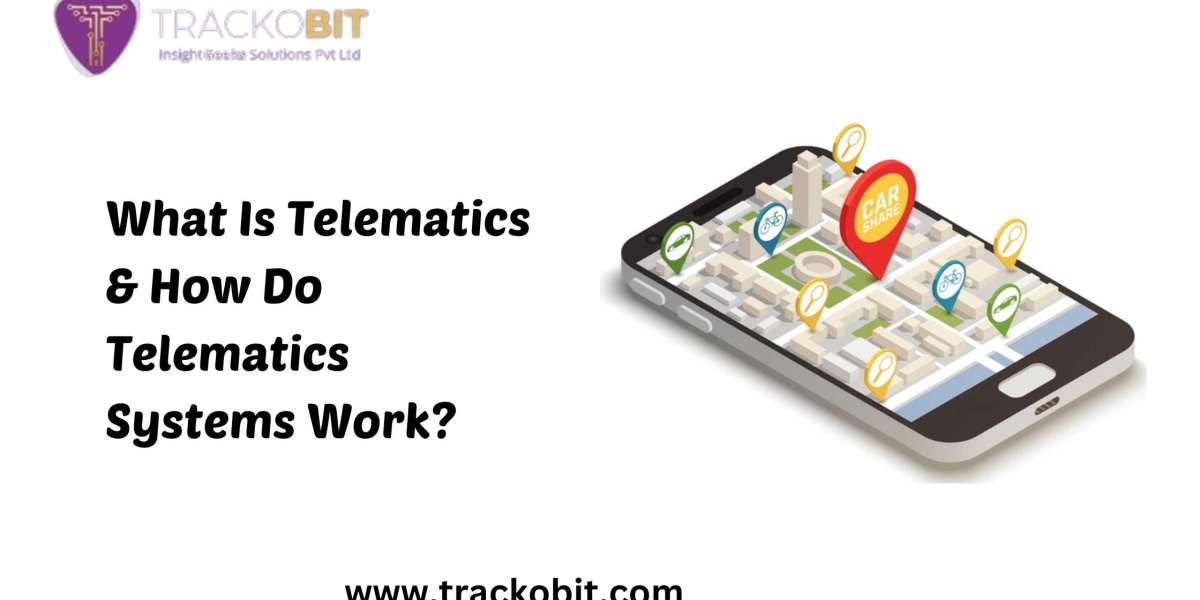In the modern business world, technology holds the key to every problem. Yes, you read it correctly.
Did you know that telematics systems can reduce fleet operational costs by up to 20%?
Well, that's why businesses nowadays are using telematics to improve productivity, reduce costs, and increase safety. From logistics to construction, various industries benefit from these solutions.
But wait, are you a business leader who hasn't started using telematics solutions yet? If so, this article is for you. We'll dive into what telematics is, how it works, and explore the concept of video telematics. Plus, we'll highlight top video telematics systems for businesses in 2024.
Understanding Telematics
In simple terms, Real-time telematics insights combines telecommunications and informatics. It basically involves the use of GPS technology and onboard diagnostics to record and transmit vehicle data.
Now you must be wondering - what sort of data are we suggesting?
So, this data includes location, speed, idling time, harsh braking, and more. Essentially, telematics provides real-time insights into vehicle operations.
This means, businesses can monitor their fleets, improve efficiency, and ensure safety. Overall, by understanding driving behaviors and vehicle health, companies can make smart decisions.
How Does Telematics Work?
In this section, you'll find out how advanced telematics solutions work.
Let's first discuss the major components of telematics solutions.
- GPS Receiver- This device tracks the vehicle's location in real-time using satellite signals.
- Telematics Device- Installed inside the vehicle, this device collects data from the GPS receiver and the vehicle's onboard diagnostics system (OBD).
- Sensors- Various sensors are placed in the vehicle to monitor specific aspects such as speed, fuel consumption, and engine performance.
- Telematics Software- This software processes the data collected by the telematics device and presents it in an easy-to-understand format.
Now, here's a breakdown of how vehicle telematics solutions work step-by-step.
- The telematics device in the vehicle collects data from the GPS receiver and various sensors. This data includes information about the vehicle's location, speed, fuel consumption, and engine status.
- The collected data is sent from the vehicle to a central server using cellular networks.
- Once the data reaches the central server, the telematics software processes it. The software analyzes the data to provide insights into how the vehicle is performing and how the driver is behaving.
- The processed data is then made available to users through reports and dashboards. These can be accessed in real-time, allowing businesses to monitor their fleet.
And that's it. Sounds simple, isn't it? Now, do you know that there's another advanced version of such telematics solutions? Go on reading to find out how the advanced version can benefit businesses more.
Read Blog : Benefits of Video Telematics
Concept of Video Telematics
Yes, Video telematics is an advanced form of traditional telematics. It basically integrates video technology with telematics data. This system uses dashcams and cameras to capture video footage inside and outside the vehicle.
Here’s how it differs from traditional telematics:
Visual Evidence: Video telematics provides visual proof of incidents.
Increased Safety: It offers a clearer understanding of driving behaviors.
Real-Time Monitoring: Lastly, businesses can monitor their fleets live, ensuring immediate response to incidents.
How Does Video Telematics Help Businesses?
Well, video telematics solutions can benefit businesses in a plethora of ways. Let's check the perks below.
- More Safety
Video footage from cameras installed in the vehicle provides clear visual evidence of what happened during an accident or near-miss. This helps in understanding the exact cause of incidents. Then, the same videos can be used to train drivers on safe driving practices. You can show real-life examples of both good and bad driving behavior.
- Driver Monitoring
Video telematics solution allow businesses to monitor driver behavior in real-time. This includes detecting actions like harsh braking, rapid acceleration, and distracted driving. It also ensures that drivers follow safety regulations, such as wearing seat belts and not using mobile phones while driving. This helps in maintaining high safety standards.
- Less Insurance Costs
Video evidence of driving behavior and incidents can help negotiate lower insurance premiums with insurers. At the same time, video evidence speeds up the claims process by providing clear proof of fault. This leads to quicker settlements and reduced legal costs.
- Boosted Productivity
Real-time video and data insights help in planning and adjusting routes for maximum efficiency. This reduces fuel consumption and travel time. Then, by monitoring vehicle conditions and driver behavior, businesses can prevent unnecessary downtime due to breakdowns or accidents.
- Accident Analysis
Video footage provides a clear and unbiased account of events leading up to, during, and after an accident. This helps in thorough accident investigation and identifying the root cause. Additionally, visual proof helps in quickly resolving disputes and determining liability. This reduces the time and cost associated with accident investigations.
- Fraud Prevention
Lastly, advanced telematics solutions provide undeniable visual proof of events. This helps in preventing false claims and staged accidents.
Till now, you must be clear about both traditional vehicle telematics solutions and the advanced one. Finally, let's check out some top systems that you can choose to work with.
Top Video Telematics Systems for Businesses to Use in 2024
Here are the three best video telematics solutions that you can choose in 2024.
- TrackoBit
In the list, TrackoBit stands out with its robust features:
Visual Supervision: Monitor your fleet visually in real-time.
24x7 Livestreaming: Continuous live streaming ensures round-the-clock monitoring.
Driver Monitoring System and ADAS: Advanced systems to monitor and assist drivers.
Manage Careless Driving: Identify and correct risky driving behaviors.
Screenshots and Clips: Capture important moments for later review.
Advanced Collision Alarm: Immediate alerts in case of collisions.
Analytical Dashboard: Comprehensive dashboard for data analysis and decision-making.
- GeoTab
GeoTab is another well-known name in the telematics market. Here are some of the perks that you must know about GeoTab.
Scalability: Suitable for businesses of all sizes.
Integration: Easily integrates with other business systems.
Customizable: Flexible and can be tailored to specific business needs.
However, a high initial investment is needed.
- Verizon Connect
At the third rank comes Verizon Connect. Here are some perks of using Verizon Connect.
Coverage: Extensive network coverage.
Customer Support: Strong support services.
User-Friendly Interface: Easy to navigate and use.
The only disadvantage that businesses must consider is it is less flexible compared to some competitors.
Final Words
Overall, Telematics solutions, especially video telematics, are upgrading the fleet management process. By integrating video with traditional telematics, businesses can now achieve greater safety and cost savings.
So, if you still need to adopt telematics, now is the time to start. Get this technology and take your business operations to the heights.







